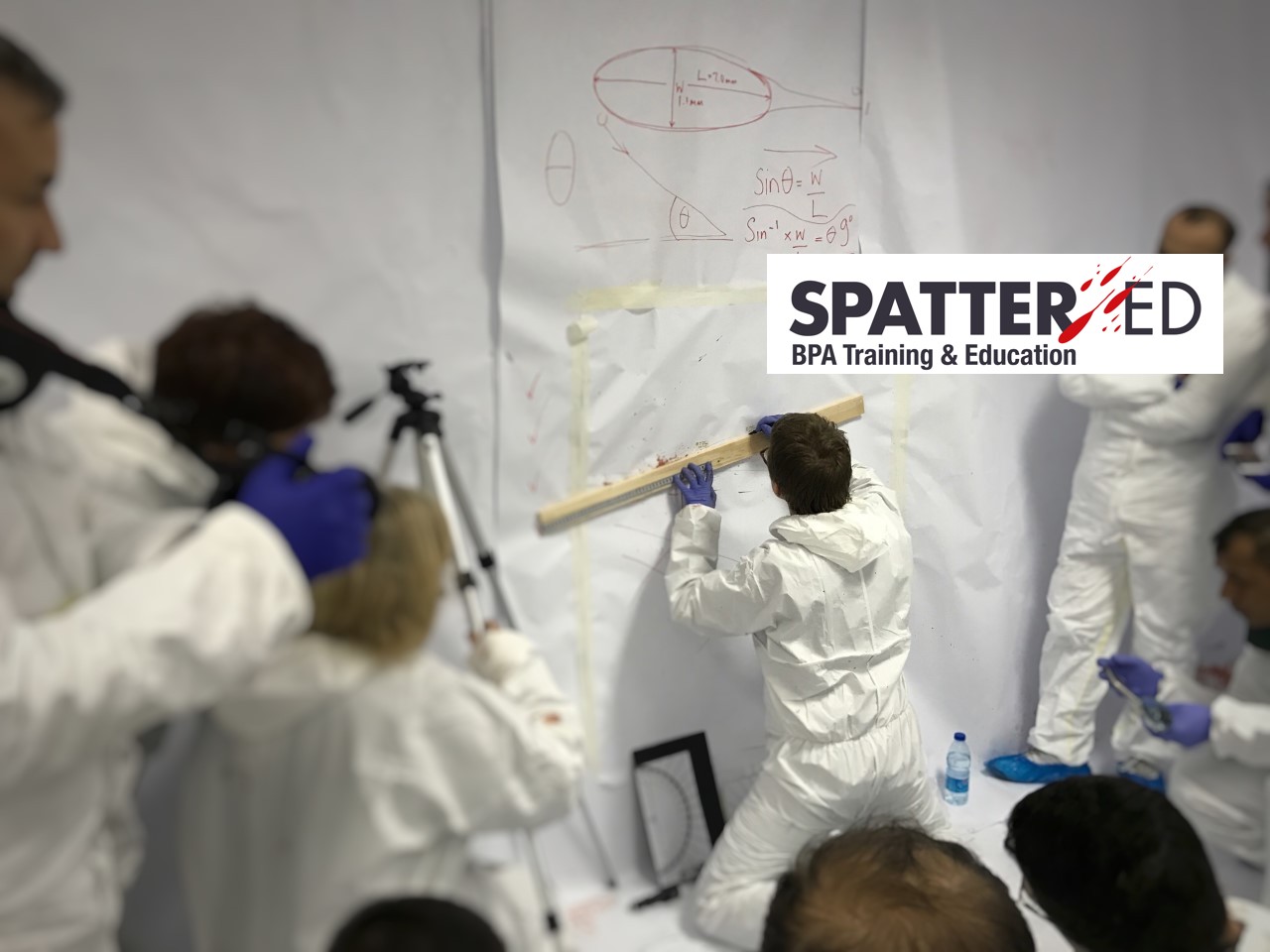
Advanced Bloodstain Pattern Analysis (BPA) Training
The 5-day Advanced BPA course is structured to allow participants, who have previously attended the Level 2 / Basic BPA Training course (or a documented equivalent), to improve their skills and knowledge and attain competency in the independent analysis of bloodstain patterns at crime scenes and provide subsequent testimony as an expert witness. The course is suitable for Law Enforcement Personnel, Crime Scene Investigators, Forensic Scientists, Laboratory Practitioners and other individuals aligned with BPA (in the laboratory or at crimes scenes) as part of their ongoing professional development in BPA. The training comprises of classroom-based presentations to deliver teaching across 5 modules, including gunshot-generated bloodstain patterns, and practical (wet-room) sessions along with instructor demonstrations, syndicate exercises and mock scenes.
COURSE OUTLINE
Module 1 - Review
- Re-familiarisation with the cause and effect relationships contributing to the creation of simple and complex bloodstain patterns
- Review the frameworks available to identify and classify bloodstain patterns with reference to standardised terminology, principles of blood dynamics and their application to BPA, including ‘Objective Criteria’
- Undertake an analysis of Complex Bloodstain Patterns
Module 2 - Area of Origin Determination
- Establish the area of origin for an impact pattern
- Formulate a stain selection and measurement strategy including assessment of stain shape, stain location in the pattern, number of stains and sampling
- Determine the impact angle for a variety of well-formed bloodstains to an acceptable level of accuracy and determine area of convergence
- Apply “stringing” for area of origin determination
- Review software for determining area of origin for an impact pattern
Module 3 - BPA as part of a holistic approach to crime scene examination
- Determine how the analysis of bloodstain patterns can be assisted by considering additional scientific and non-scientific information known to the crime scene personnel / police investigators, including management of bias
- Correlation of bloodstain patterns to wound pathology
- Apply scientific methods to questioned stains including use and limitations of presumptive tests for blood stain testing/selection and the review of DNA profiling techniques
- Sequencing of bloodstain pattern events
- Visualisation of latent blood marks using chemical enhancement techniques e.g. LMG, luminol
- Review of BPA validation frameworks
Module 4 - Documenting Bloodstain Patterns
- Recording of Bloodstain Patterns and assessment of the value of the use of scale and overall, mid-range and close-up photography to document bloodstain patterns
- Note-taking, sketching, stain labelling and report writing
- Development of reporting skills including consideration of the strengths and limitations of investigative versus evaluative reporting and management of bias
- Review of pattern transfer determination and identification
- Presentation of bloodstain pattern analysis findings through debrief and expert testimony
Module 5 – Gunshot-generated bloodstain patterns
- Demonstration of bloodstain patterns produced as a result of gunshot impacts and assessment of resultant (back and forward) stain patterns.

